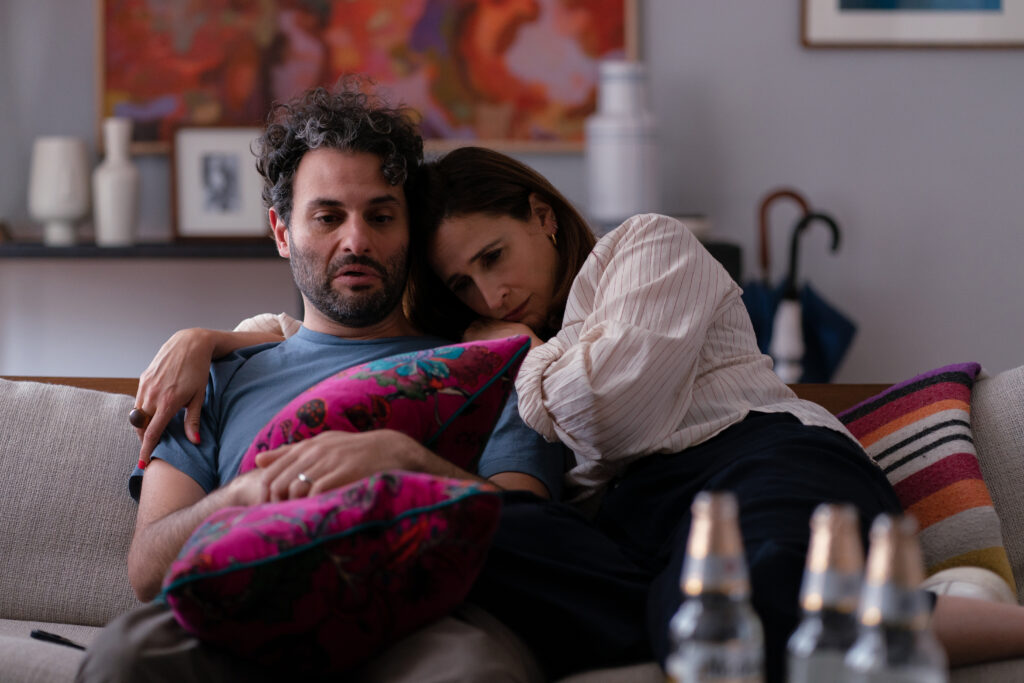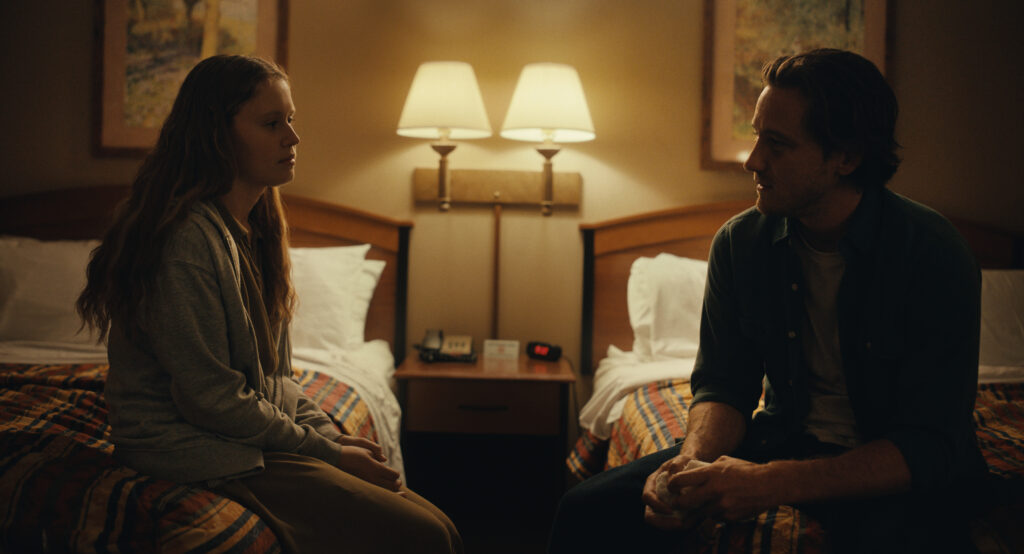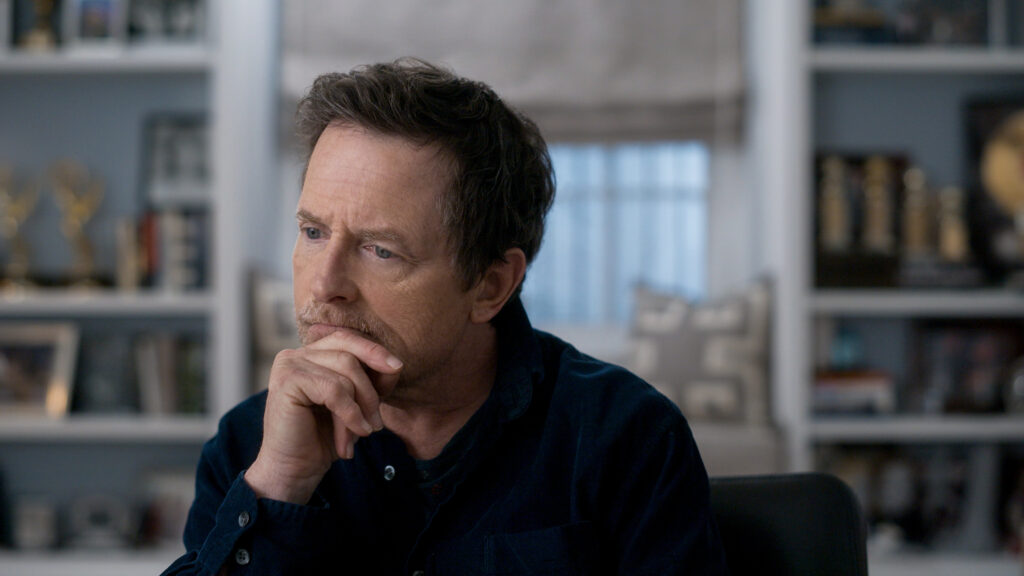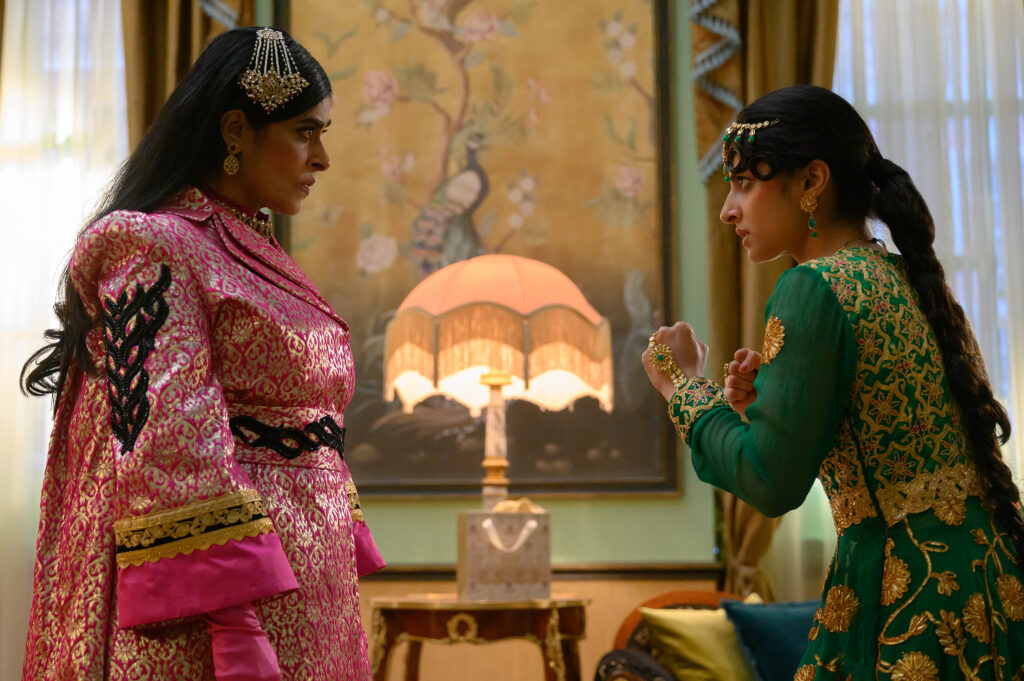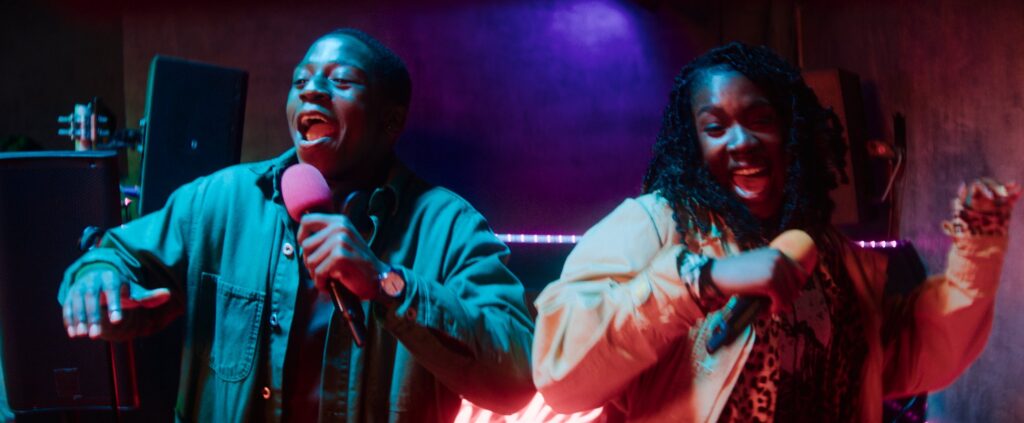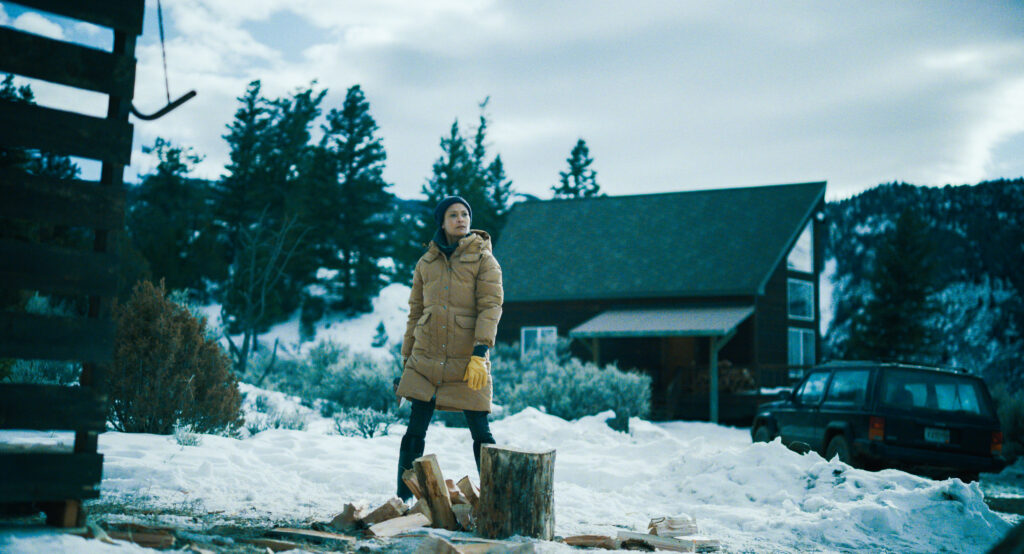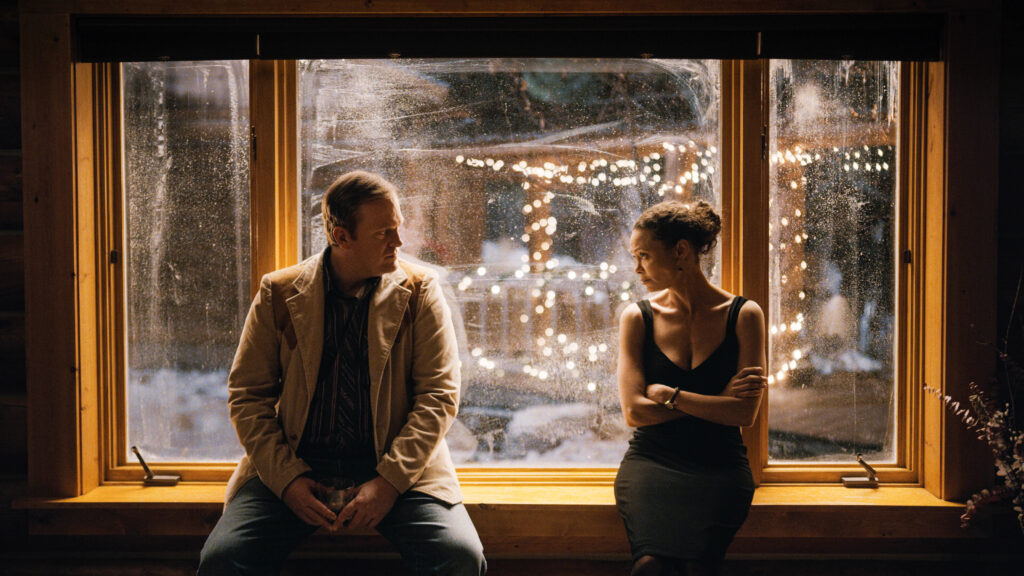June 1, 2023
by Carla Hay

Directed by Celine Song
Some language in Korean with subtitles
Culture Representation: Taking place from 1990 to 2014, in Seoul, New York City, and briefly in Toronto, the dramatic film “Past Lives” (partially inspired by a true story) features a predominantly Asian cast of characters (with some white people) representing the working-class and middle-class.
Culture Clash: Twenty-four years after moving from South Korea to North America in her childhood, a 36-year-old married woman reconnects with a single man of the same age who could have been her adolescent sweetheart if she hadn’t moved away from South Korea.
Culture Audience: “Past Lives” will appeal primarily to people who are interested in well-acted dramas about missed connections, immigration, and contemplating “what if” scenarios, when it comes to love, friendship and romance.

“Past Lives” beautifully tells a mature and realistic story about love, friendship and heartbreak for two people whose lives have gone in different directions, but they find a way to reconnect. It’s a relationship drama that’s an instant classic. If you’re looking for a movie with a formulaic ending, then look elsewhere. “Past Lives” authentically conveys the unsettling effects of when people begin to wonder if the lives that they have are the lives that they really want, and if past decisions they made were the right decisions.
Written and directed by Celine Song, “Past Lives” (which had its world premiere at the 2023 Sundance Film Festival) is a movie that is inspired by events that happened in Song’s own life. The movie isn’t autobiographical, but it explores many of the same feelings that came about when Song (who is originally from South Korea and married to an American man) was visited by man who was her childhood sweetheart in their native South Korea. Song is a New York City-based playwright whose feature-film debut is “Past Lives,” which opens with a scene that’s based on one of Song’s real-life experiences.
As she explains in the “Past Lives” production notes, she, her husband and her close childhood friend went to a restaurant/bar together during this visit. “I was sitting there between these two men who I know love me in different ways, in two different languages and two different cultures. And I’m the only reason why these two men are even talking to each other. There’s something almost sci-fi about it. You feel like somebody who can transcend culture and time and space and language.”
The opening scene of “Past Lives” does something clever in introducing this potentially uneasy love triangle: In 2014, two men and a woman are sitting side-by-side at a counter in a New York City bar, with the woman the middle. This trio is being observed by a man and a woman nearby (who are never seen on screen), who have a conversation trying to guess how these three people know each other. “Past Lives” (which takes place from 1990 to 2014) circles back to this bar scene later in the movie to show what led to this pivotal conversation between the trio.
After this opening scene, “Past Lives” flashes back to 1990 in Seoul, South Korea, where 12-year-old Moon Na Young, also known as Nora (played by Moon Seung-ah), and is hanging out with her best friend, Jung Hae Sung (played by Leem Seung-min), who’s about the same age as Nora. Hae Sung is a basketball enthusiast, who gently teases Nora because she’s crying over the fact that Hae Sung got first place in a contest that they entered. Hae Sung asks Nora why she’s angry over not getting first place. “I’m always second-place to you, and I never cry,” he says.
Viewers will soon see that Nora is the more talkative and ambitious of this duo of friends. She’s excels in academics and wants to be a writer when she grows up. At this point in Hae Sung’s childhood, he is less certain of what he wants to do with his life. He is well-mannered and throughtful, which are personality traits that carries throughout his life. He’s also not as quick as Nora to reveal his feelings.
In another scene, Hae Sung’s mother (played by Min Young Ahn) tells Nora’s mother (played by Ji Hye Yoon), who both don’t have names in the movie, that Na Young/Nora and Hae Sung look cute together. Hae Sung’s mother implies that these two kids will probably get married to each other when they’re adults. Hae Sung seems to also think that this will be the natural progression of his relationship with Nora.
However, the lives of Nora and Hae Sung will soon go in very different directions. Hae Sung is shocked to find out one day that the Moon family is moving to Canada to try something new in their lives. It’s a relocation that was decided by both parents, although Nora’s father (played by Wong Young Choi), who works in film production, seems to be more of the driving force in this decision. Nora’s father is the one who decided what the English-language first names would be for Na Young and her younger sister Si Young (played by Yeon Woo Seo), who is quieter and more passive than Na Young/Nora. Nora wanted to be renamed Michelle.
Before moving away, Nora tells her classmates that her family is moving to Canada because “Koreans don’t get the Nobel Prize for literature,” which is another way of saying that Nora believes that she has to become part of Western culture to achieve what she wants in life. Viewers can infer that these beliefs were instilled in her by her parents. It also explains why Nora doesn’t go back to visit South Korea after she has moved away.
The first third of the movie ends with a poignant goodbye between Nora and Hae Sung outside on a street near her home, and then the Moon family is shown arriving at Toronto International Airport. The farewell between adolescent Nora and Hae Sung becomes a defining life moment that gets compared to something that happens later in the movie. Nora and Hae Sung don’t fully understand at the time how momentous this goodbye will be in their lives.
The middle section and last-third section of the “Past Lives” shows the adulthood of Nora (played by Greta Lee) and Hae Sung (played by Teo Yoo), who are leading two very different lives. The second-third of the movie begins in 2002, when 24-year-old Nora is a university grad student in New York City. Hae Sung is enlisted in the South Korean military, which is required for South Korean men in his age group. Hae Sung eventually becomes an engineering student.
Nora finds out that Hae Sung has been trying to contact her, by leaving a message on the Facebook page of her father’s production company. Nora is slightly amused and very intrigued, so she decides to reach out to Hae Sung through social media. They reconnect with Skype conversations that are flirtatious with underlying potential for romance. In her 20s, Nora is proud to tell Hae Sung that she’s no longer the “crybaby” that he knew her to be when they were kids.
There’s an unspoken “push and pull” going on in these conversations. Nora and Hae Sung both know that if they start a romance with each other, the issue will inevitably come up about who is going to move to another country to be with that person. It’s an issue that’s the main wedge in preventing this relationship from blossoming.
Nora, who is fluent in Korean and English, is very happy and settled in New York City. Hae Sung, whose English is limited, sees himself as always living in South Korea. Nora tries to motivate Hae Sung to visit her in New York City, but he asks her a question that has a ripple effect on their relationship thereafter: “Why would I want to go to New York?” Observant viewers will notice that Nora doesn’t offer to visit Hae Sung in South Korea.
The last third of the movie takes place 12 years later, in 2014. Nora is still in New York City and now happily married to an American book author named Arthur Zaturansky (played by John Magaro), who is an easygoing and loving husband. However, Nora’s world gets rocked when she hears from Hae Sung after not being in contact with him for many years. Hae Sung, a never-married bachelor, is coming to New York City to visit for a week. And he wants to see Nora. It will be the first time Nora and Hae Sung will see each other in person (not over a computer or phone screen) since they said goodbye to each other as 12-year-old in South Korea.
None of this is spoiler information, because “Past Lives” (which is told in mostly in chronological order) is being marketed around the last third of the film. The movie has occasional flashbacks showing Nora and Hae Sung in their childhoods. The chronological narrative of the movie helps better explain how the relationship between Nora and Hae Sung changed over the years.
Nora’s anticipation for Hae Sung’s visit doesn’t go unnoticed by Arthur, who is trying to be open-minded and not jealous. Arthur knows that Nora and Hae Sung were close friends in a relationship that didn’t blossom into a romantic dating relationship. However, even though Nora doesn’t say it out loud, it’s very obvious that Nora wonders if Hae Sung is her true love/soul mate, the “one who got away.”
What Nora does say out loud to Arthur is this defensive response when Arthur wonders if Nora is still attracted to Hae Sung: “I don’t think it’s an attraction. I think I just missed him a lot. I miss Seoul.”
It’s not that Nora doesn’t love Arthur. It’s just that Nora knows her emotional connection with Hae Sung goes much deeper that what she has with Arthur. Hae Sung is a reminder of Nora’s past, but he’s also an example of a future she could have had but chose not to have. After Hae Sung arrives in New York City, the time that Nora and Hae Sung spend reconnecting are mostly on platonic dates to various places in New York City. During a few of the conversations in these get-togethers, Hae Sung brings up the concept of past lives determining future lives.
“Past Lives” shows how two people who could be passionate soul mates might not be compatible when it comes to marriage and life goals. Unless someone wants a long-distance or unconventional marriage, part of the commitment of marriage is spending time living together. Curiosity is a huge reason for Nora’s willingness to meet up with Hae Sung. What does he really want from her? And has he changed his mind about living in the United States?
These questions linger during the most memorable conversations in “Past Lives,” until Nora gets some definitive answers. But the emotional heart of the story has to do with the unanswered “what if” questions that Nora and Hae Sung have about their lives. Lee and Yoo are stellar in their performances as Nora and Hae Sung. These two co-stars skillfully depict showing the restraint of two characters who don’t want cross boundaries into inappropriateness but have the openness of two formerly close friends who are eager to reconnect.
As for that bar conversation featured in the movie’s opening scene, it realistically shows how Arthur feels like a “third wheel” when he’s around Nora and Hae Sung, who frequently speak to each other in Korean. Arthur knows a little bit of Korean, but he’s not fluent in the language. Magaro is quite good in a role that is meant to be a supporting role, but it never looks diminished or undervalued. Feeling like the “odd man out” is as awkward for Arthur as it is intentionally uncomfortable for viewers to watch.
Unlike other movies that would turn this love triangle into heavy melodrama or unrealistic comedy, “Past Lives” is about how people who are emotionally mature adults can navigate this tricky situation. A sign of great acting is when viewers can sense what the characters are thinking but are not saying out loud. The biggest truths of “Past Lives” are in those unspoken moments, with a lot of these truths showing themselves in the movie’s very last and unforgettable scene.
A24 will release “Past Lives” in select U.S. cinemas on June 2, 2023, with an expansion to more U.S. cinemas on June 23, 2023.


